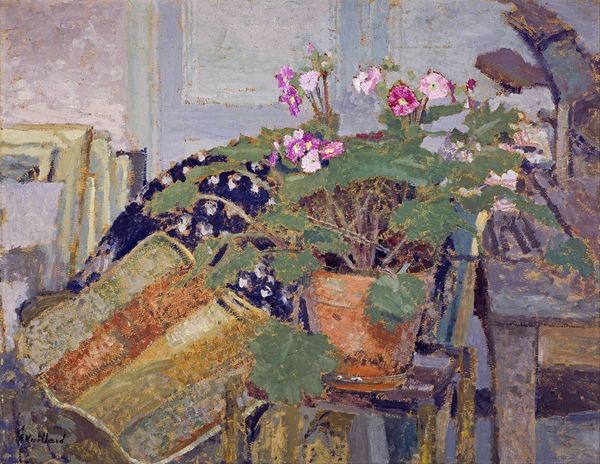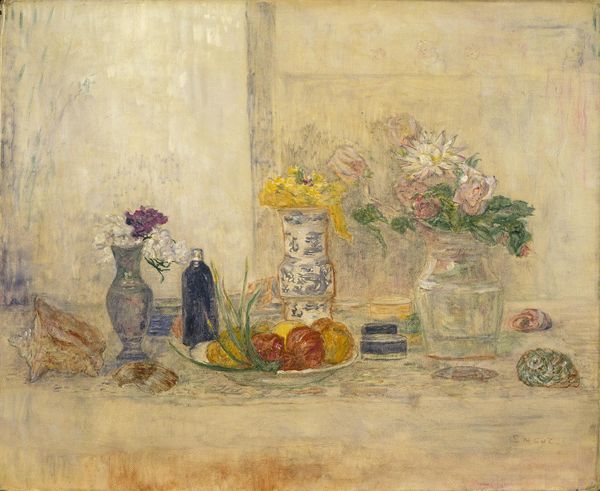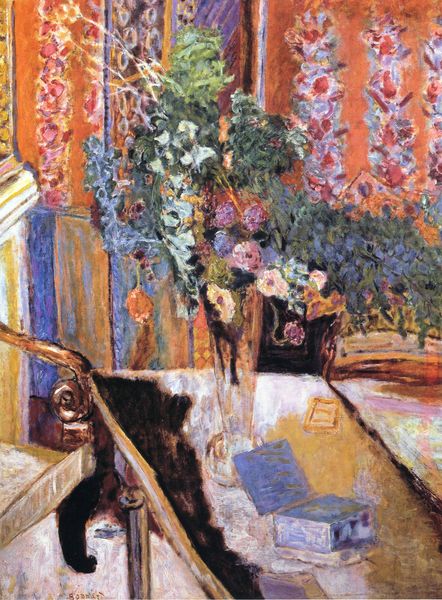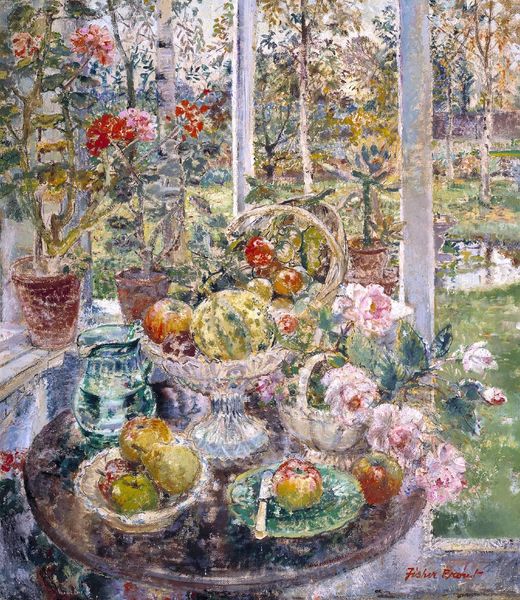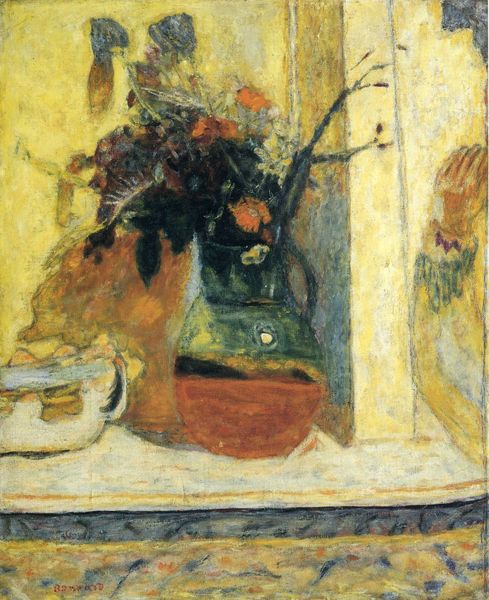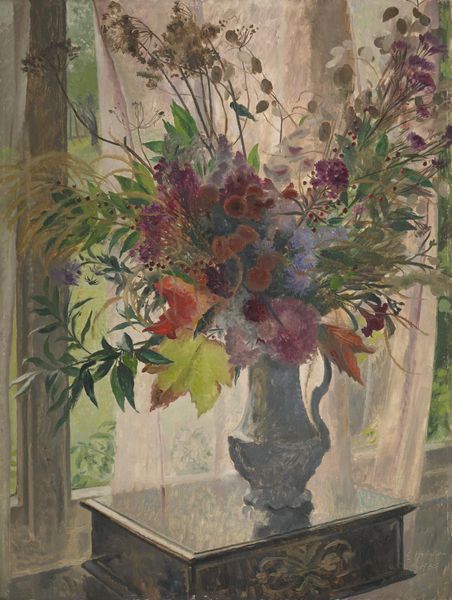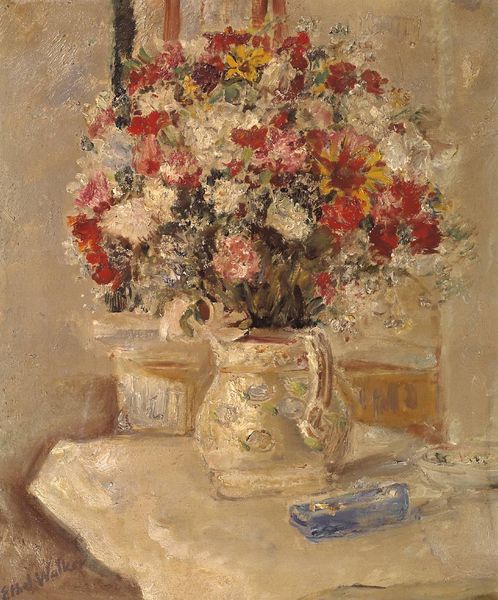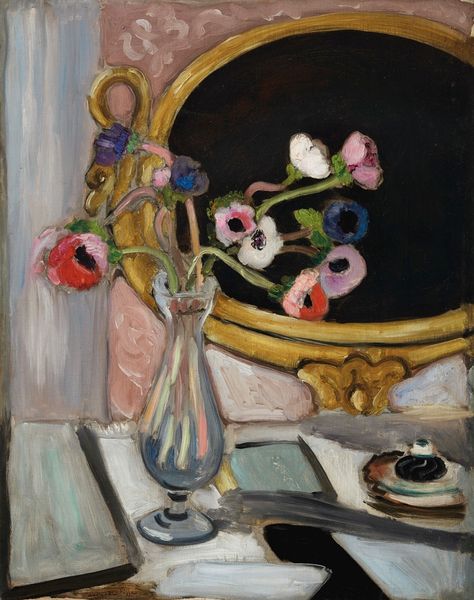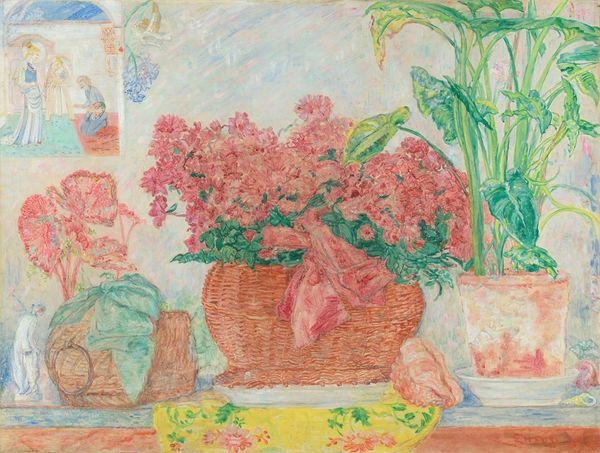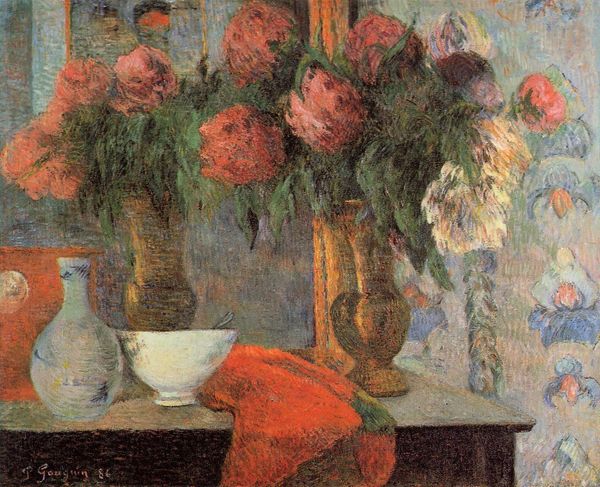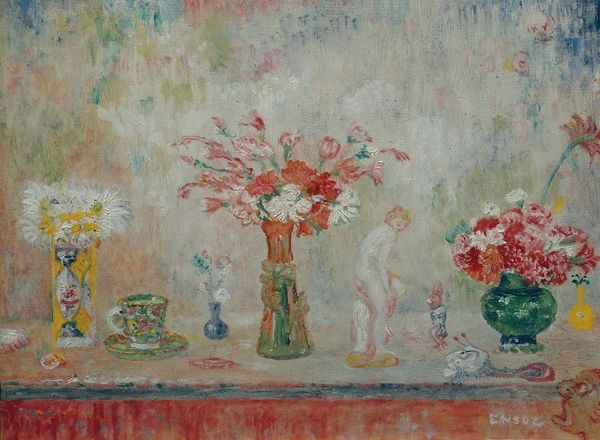
#
abstract painting
#
possibly oil pastel
#
handmade artwork painting
#
oil painting
#
acrylic on canvas
#
underpainting
#
painting painterly
#
watercolour bleed
#
watercolour illustration
#
watercolor
Copyright: Public domain
Editor: Here we have Konstantin Gorbatov's "The Open Window," painted in 1931. It strikes me as an intimate, almost wistful scene, doesn’t it? There's a definite sense of stillness. How do you interpret this work? Curator: That feeling of stillness is key, but let's delve into its possible historical context. Consider when this was painted - the early 1930s, a time of great social and political upheaval globally. Could this window represent a longing for escape, or perhaps a quiet act of resistance against the tumultuous world outside? Does the arrangement of interior objects -- the domestic -- carry particular gendered weight in this narrative? Editor: Resistance? I hadn't thought of it that way. It seems so serene on the surface. Do you mean the domestic space itself becomes a political statement? Curator: Precisely. Consider the historical restrictions placed upon women. Confined, often, to the domestic space, finding ways to resist and subvert such expectations. Gorbatov, though a male artist, was himself an exile. How does that personal narrative weave into this tableau? What does it mean to create 'home' in a state of forced displacement? This "Open Window," then, begs the question: What are we seeing beyond this space, and whose gaze dictates the view? Editor: So the window isn't just a window – it's a frame for exploring themes of exile, gender, and resistance? That’s a very different read than my initial impression! Curator: Exactly! By placing art in dialogue with broader socio-political contexts, we discover a depth that surpasses what appears on the surface. Art becomes a mirror reflecting the complexities of our shared human experience. Editor: I never thought about this painting in that way, thank you. I will consider such intersectional questions of identity and social context when trying to engage with art. Curator: It is essential to question the status quo to develop deeper empathy for diverse perspectives within our own shared humanity.
Comments
No comments
Be the first to comment and join the conversation on the ultimate creative platform.
